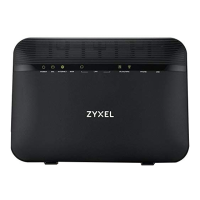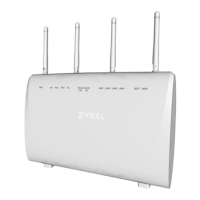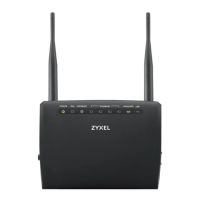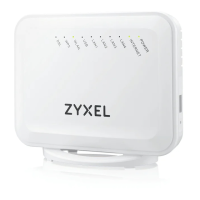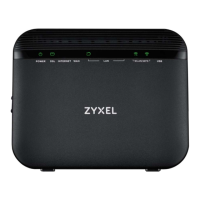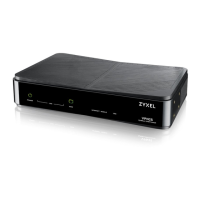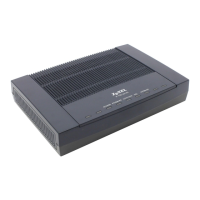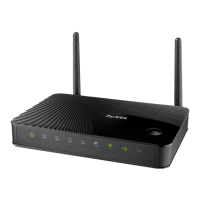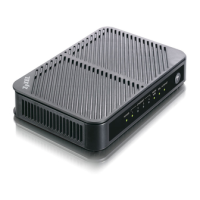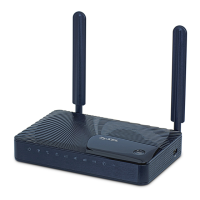Chapter 7 Wireless
VMG8924-B10D/B30D User’s Guide
97
Figure 31 Wireless > General: Basic (WEP)
The following table describes the labels in this screen.
7.2.3 More Secure (WPA(2)-PSK)
The WPA-PSK security mode provides both improved data encryption and user authentication over
WEP. Using a Pre-Shared Key (PSK), both the VMG and the connecting client share a common password
in order to validate the connection. This type of encryption, while robust, is not as strong as WPA, WPA2
or even WPA2-PSK. The WPA2-PSK security mode is a newer, more robust version of the WPA encryption
standard. It offers slightly better security, although the use of PSK makes it less robust than it could be.
Click Network Setting > Wireless to display the General screen. Select More Secure as the security level.
Then select WPA-PSK or WPA2-PSK from the Security Mode list.
Table 18 Wireless > General: Basic (WEP)
LABEL DESCRIPTION
Security Level Select Basic to enable WEP data encryption.
Generate
password
automatically
Select this option to have the VMG automatically generate a password. The password field will
not be configurable when you select this option.
Password 1~4 The password (WEP keys) are used to encrypt data. Both the VMG and the wireless stations must
use the same password (WEP key) for data transmission.
If you chose 64-bit WEP, then enter any 5 ASCII characters or 10 hexadecimal characters ("0-9",
"A-F").
If you chose 128-bit WEP, then enter 13 ASCII characters or 26 hexadecimal characters ("0-9", "A-
F").
You must configure at least one password, only one password can be activated at any one
time.
more.../less Click more... to show more fields in this section. Click less to hide them.
WEP Encryption Select 64-bits or 128-bits.
This dictates the length of the security key that the network is going to use.
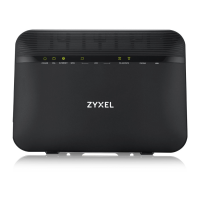
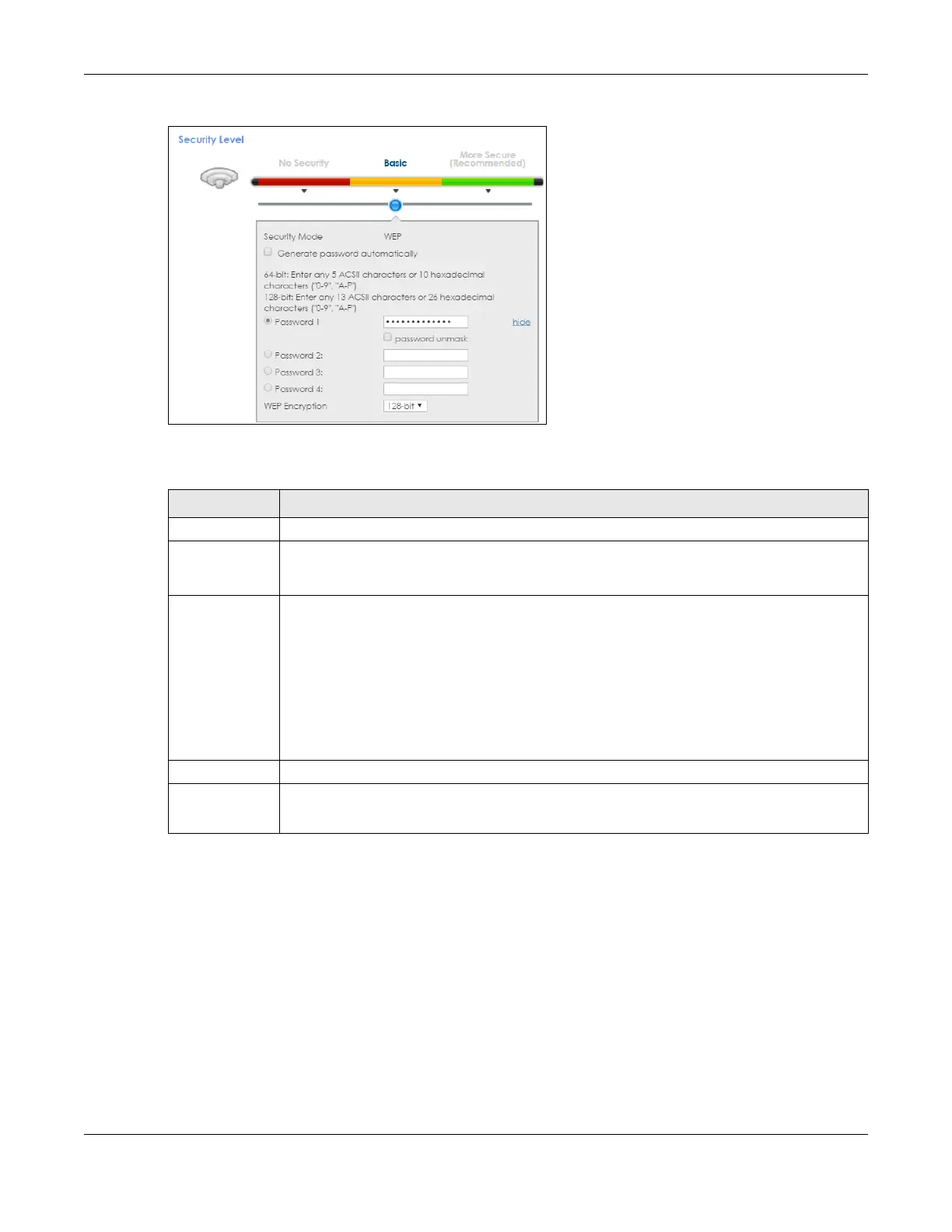